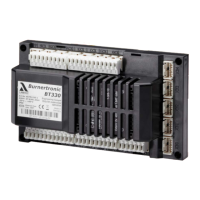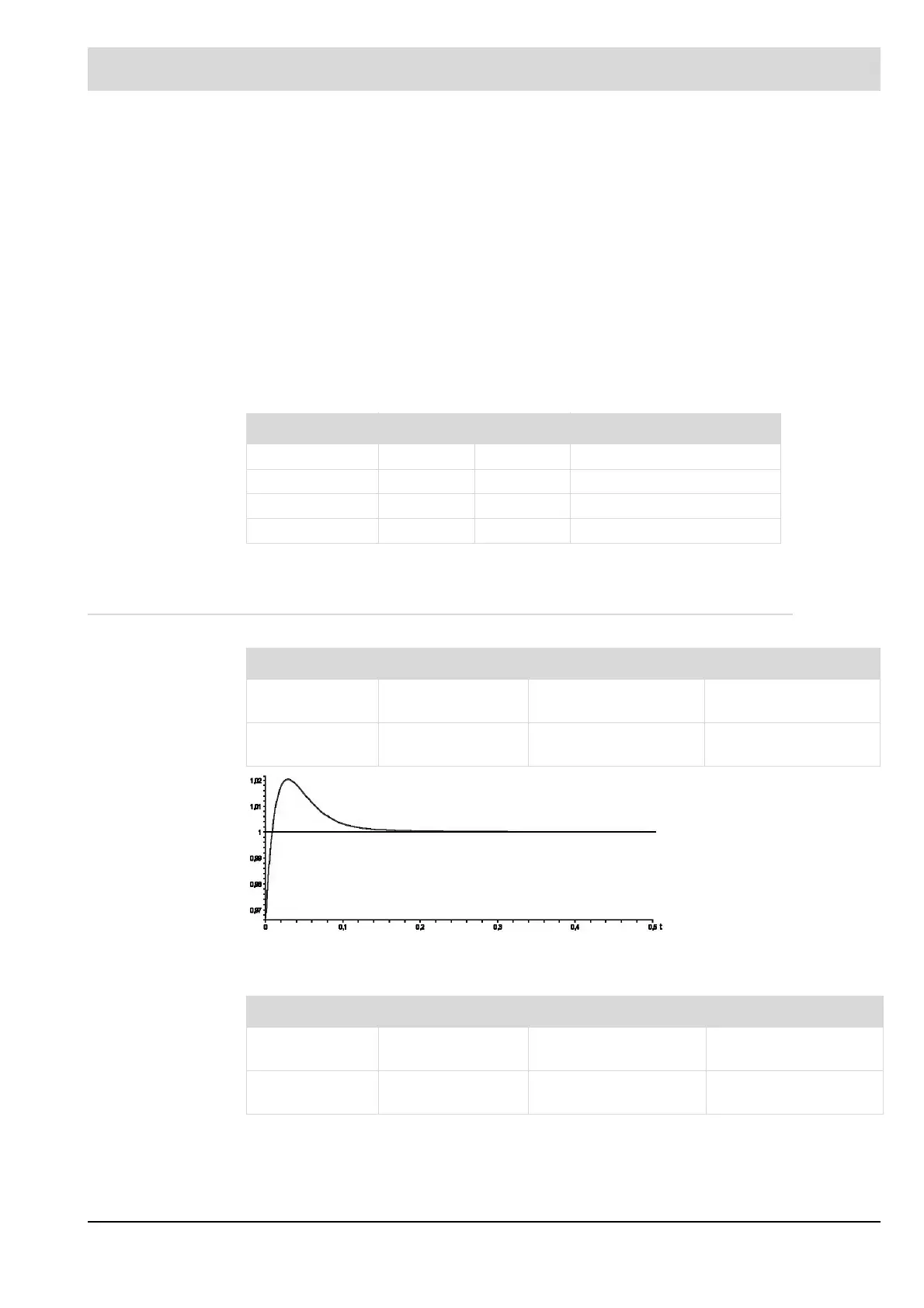172
8 Options
• P share, I share, D share are added up and serve as adjustments to the firing rate default
of the fuel/air ratio control.
• As long as the actual value is below setpoint, P term and I term are positive, that is to say
both of these terms will increase the firing rate default.
• In such a case only D term has a negative value (assuming that boiler temperature is ris-
ing). Use D term carefully because it leads to a higher burden for the actuating elements.
• In order to avoid excessive overshoot during burner start-up adjust parameters to achieve
a suitably large D term.
• If despite a large setpoint deviation the burner is not run at full or base firing rate you
should increase the P term.
• The longer you select the adjustment time the calmer the fuel/air ratio control. However,
this also increases the actual values’ deviation from setpoint value and leads to slower ad-
justment.
Adjustment of the values according to the controlled system is highly recommended.
8.1.11 Aides for Setting
Fig. 8-6 Controller operation with P-term too high
Hot Water Installations Steam Boiler Installations
P term 120 280 600
I term 60 360 300
D term 20 50 25
Adjustment time 15 2 20
Characteristic Control Process Control Mode Start-up Procedure
P term higher decrease of
attenuation
stronger reaction with
overshoot
faster start-up with
overshoot
P term smaller increase of
attenuation
less reaction, less ten-
dency to oscillate
slower startup
Characteristic Control Process Control Mode Start-up Procedure
I term higher decrease of atten-
uation
stronger reaction with
tendency to oscillate
faster start-up with ten-
dency to oscillate
I term smaller increase of attenu-
ation
less reaction, less ten-
dency to oscillate
slower start-up

